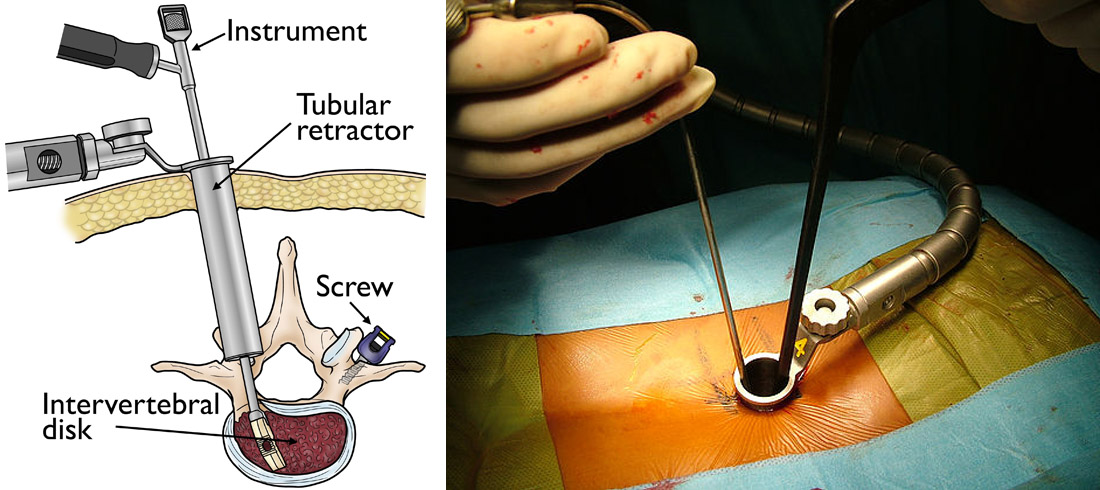
Today, more than one million instrumented spinal procedures are performed every year, many of which are performed using minimally invasive surgical (MIS) techniques.
A minimally invasive procedure is one that merely is less invasive than the alternative. The MISS goals are to give you the same outcome as an open surgery with less pain, fewer complications, and shorter recovery time. In some cases Minimally Invasive Spine Surgery can be performed via a surgical incision as small as one inch.
An open spinal surgery is one in which your surgeon makes an incision, or cut, typically about five to six inches long, and then moves the muscles to one side in order to operate on the bone.
Minimally invasive spine surgery, on the other hand, only requires a cut that’s about an inch long and uses a special tool called a retractor to spread push muscles out of the way. This causes far less trauma to your muscles, which means less post-surgical pain and a speedier recovery.
In addition to the shorter recovery times and improved function associated with MISS, other benefits include:
- Shorter hospital stays, with many procedures being performed on an outpatient basis using local anaesthesia instead of general anaesthesia.
- Reduced risk of infection
- Decreased post-surgical pain and narcotic use
- Less blood loss during surgery
- Less damage to soft tissue
- Reduced scarring
- Quicker return to activities of daily living (ADL), including work, self-care, and leisure
- Less post-operative rehabilitation
- Better postoperative quality of life
While your diagnosis alone can’t determine whether you’re a candidate for MIS, procedures that can commonly be performed using minimally invasive techniques include:
- Fusion
- Decompression
- Microdiscectomy
- Foraminotomy
- Laminectomy
- Laminotomy
- Kyphoplasty
- Vertebroplasty
MIS has grown more popular in recent years because patients tend to recover much faster and with less pain than with open surgeries.
A 2020 study found patients who underwent minimally invasive spinal fusions and decompressions resumed work and driving within 3 weeks of surgery. Meanwhile, open decompressions and fusions may require months of recovery.







